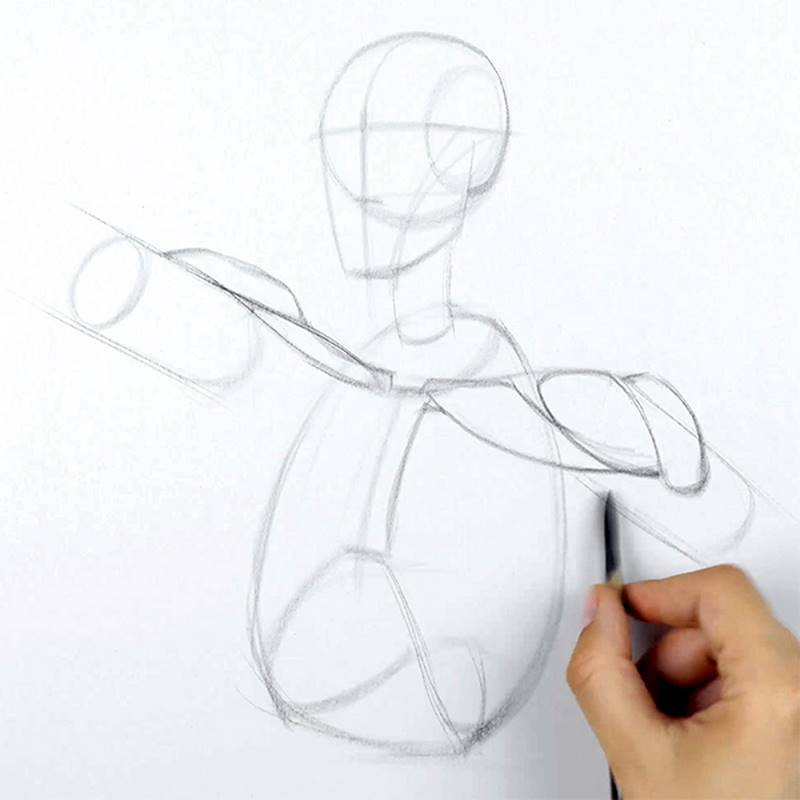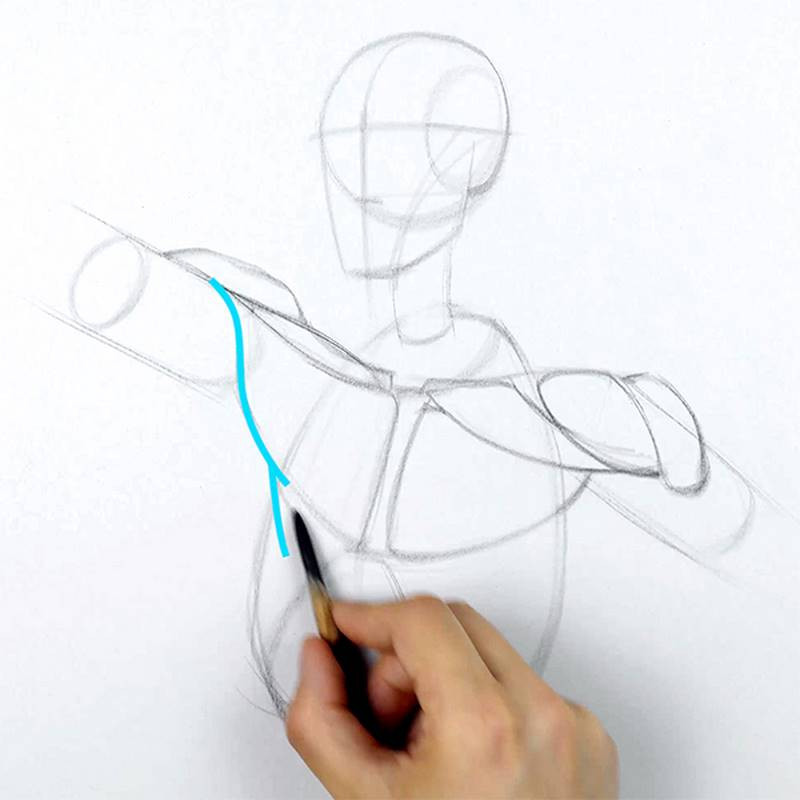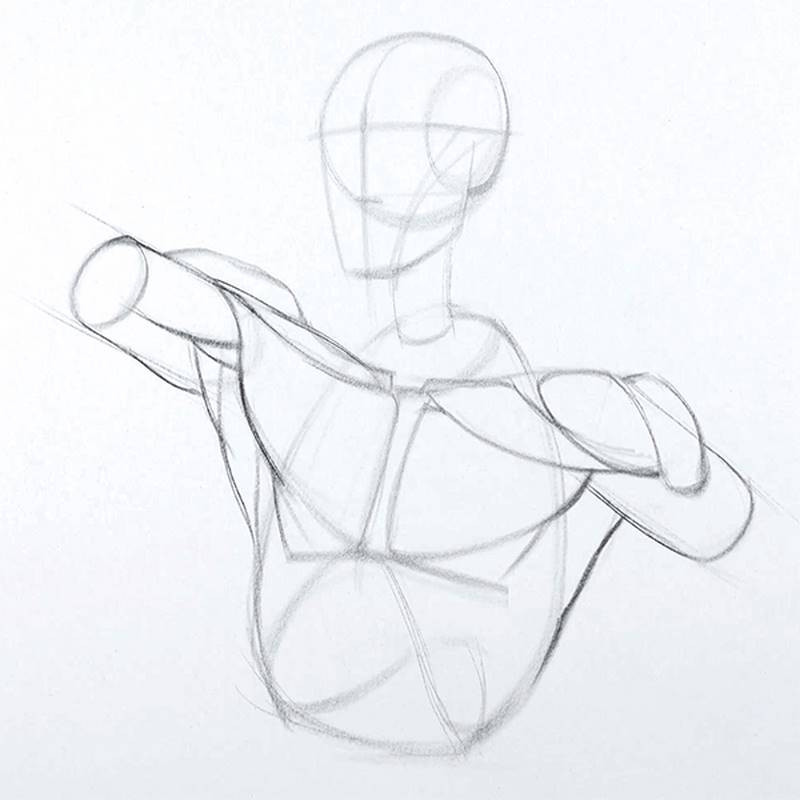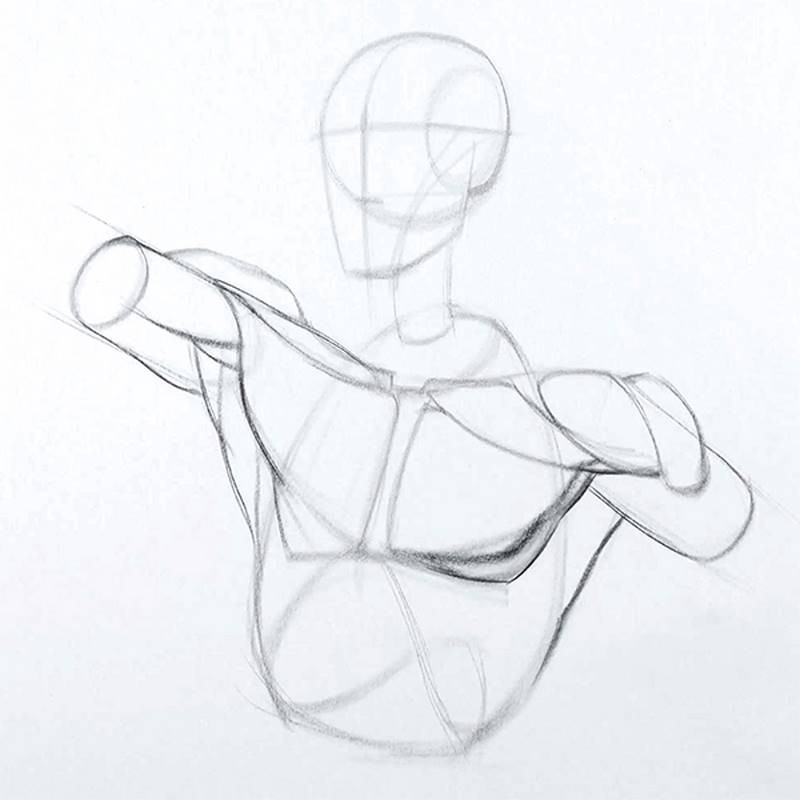For additional help, watch my critique session on the pecs. I go over student submitted work and provide insights on how they can improve their assignment examples.
***
How to Draw Pecs - Form
In the previous lesson, we learned the anatomical structure of Pecs. Now, let’s take a look at how you can apply all this information to construct the forms of the pecs in your drawings.
The pecs make a curved front plane that faces slightly upwards. The bottom plane starts at or just below the nipple. The depth of this bottom plane determines how thick the muscle is.
To do a drawing of the pecs, I suggest you start with a light lay-in of the skeleton to help place the muscle on top.
Let’s start with the clavicular portion. Originating from the clavicle and stretches the farthest of the 3 portions, until it’s covered by the deltoid.
Then the sternal portion, from the entire length of the sternum, converges toward the armpit and dips under the clavicular portion.

The lateral border curves up toward the arm. There might even be a double curve when the arm is abducted away from the body, because of how the sternal and abdominal sections overlap and attach to the tendon, as you can see here. When the arm raises the muscle mass keeps its thickness near the armpit where it attaches to the tendon. More of the stretching happens closer to the sternum. The tendon from the sternal section can extend an inch or two from the armpit and when a muscular figure flexes, it often creates a dimple, as the muscle fibers take a sharp turn inward.

The lower border of the pecs lines up with the bottom of the sternum. According to Loomis, the nipples are roughly one head measurement down from the chin, so the bottom of the pecs are just below that. It’s straight and horizontal, maybe leaning a bit down laterally. When drawing a torso that’s tilted toward you or away from you, this lower border acts as a natural cross-contour line. Use it to show the round form of the rib cage!

In male figures, there’s a crescent-shaped fat pad on the lower outer corner that contributes to its boxy-ness. Man boobs are simply a result of that crescent-shaped fat pad gaining more and more mass and running over onto the rib cage. When the arm is raised, the lower mass of the pec thins, and the lower border becomes harder to distinguish. You might see ribs you couldn’t see before.

Variation
There are variations to the chest depending on the physique of the person, such as lean, average, muscular, and heavy. To learn more about these variations, head on over to the proko.com/anatomy. The premium section has longer lessons, 3d models, and additional demonstrations.

Check out the Premium Anatomy course to see the full version of this video and all other Anatomy videos.
If you haven't done the assignment yet, refer back to our previous video to get the assignment images and instructions.
In the next episode, we’ll explore the female chest, and how it’s different and similar to the male chest.
Thanks for watching everybody! Do the chest-bump-worthy thing and share this video with your friends, give me a thumbs up and comment below. And if you want all the Proko news, look no further than the Proko newsletter!
Assignment: Draw the Pecs
Your homework is a two-parter. For part 1, do a tracing over a model photo of the pectoralis major and all of its bundles. If you’re not sure how to do a tracing, refer back to the Anatomy Tracing lesson. For part 2 of the assignment, invent the pectoralis major on top of photos of Skelly. I’ve provided reference photos for part 1 and 2 in the downloads. If you have the Skelly app, you can create your own pose and draw the pecs on top.




















